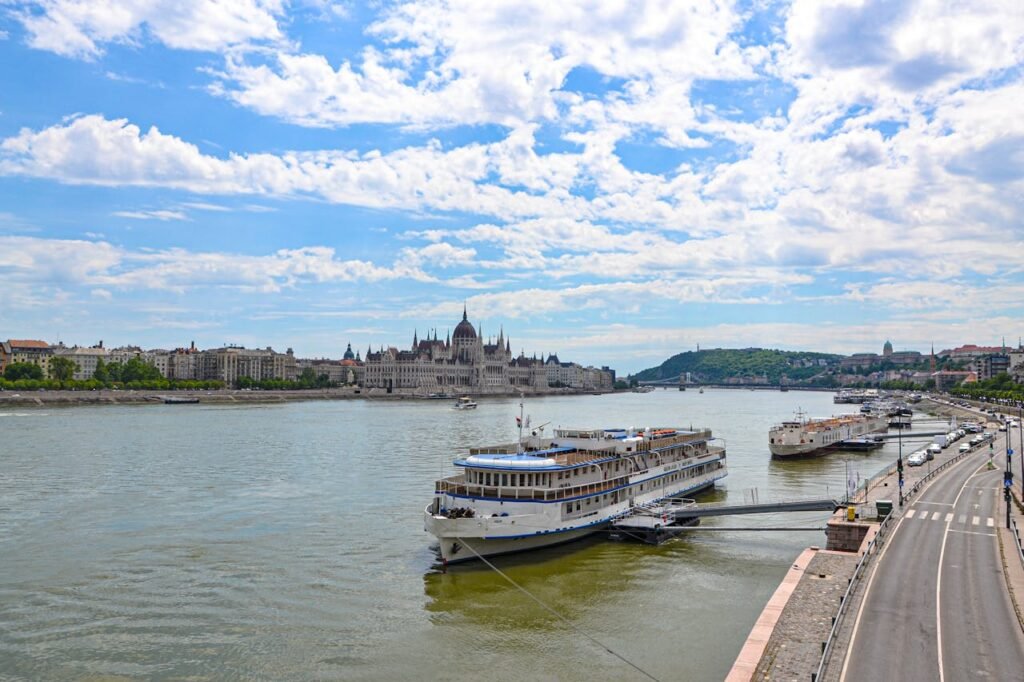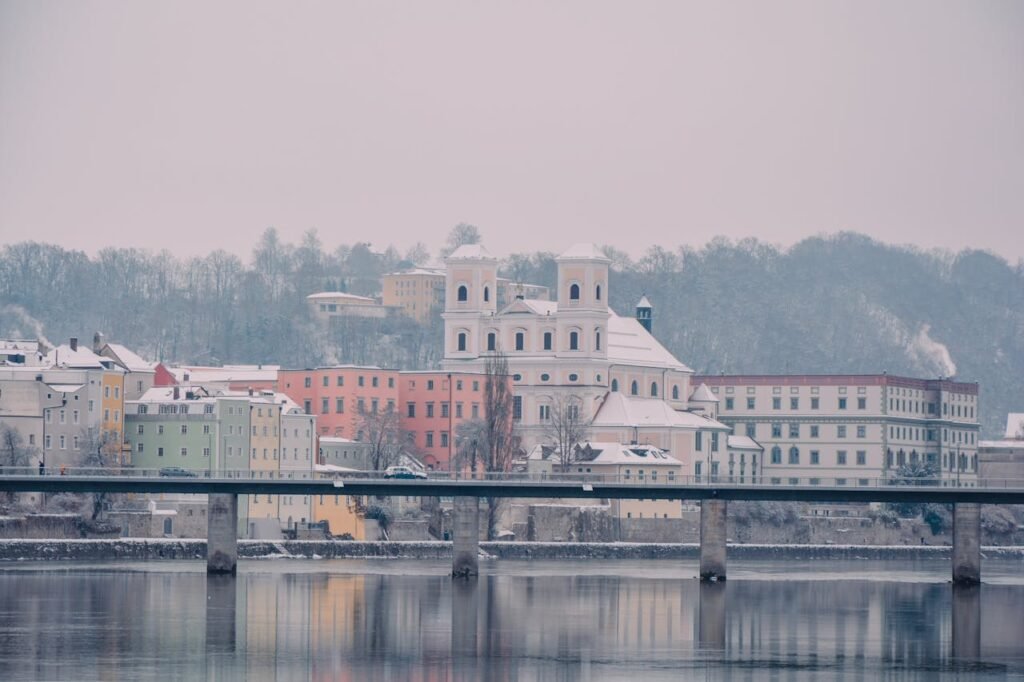Figuring out the best month to cruise the Danube isn’t simple. There’s no perfect time — just trade-offs. Water levels rise and fall unpredictably. Weather swings. Crowds—and ticket prices—shift. But one month usually comes out ahead. Let’s dig in.
Overview: What Makes a “Good” Danube Cruise Month?

Before picking a month, you’ve got to know what you care about:
- Weather & temperature comfort (walking around, outdoor decks)
- Water navigability (not too low, not too high)
- Crowds and tourism stress
- Cost & value (peak vs shoulder seasons)
- Seasonal highlights (harvests, foliage, festivals, Christmas markets)
- Risk of itinerary disruption (bus transfers, ship swaps, cancellations)
When I say “best,” I mean balancing these as well as possible for most travelers. If your priority is “totally avoid crowds” or “lowest price,” you might pick differently.
Most cruise-experts and travel writers lean heavily on autumn (especially September) as the sweet spot. (See Adventure Life, World of Cruising) (adventure-life.com)
But let’s go month by month — and also listen to people who’ve been there, done that (sometimes with drama).
January – February: Deep Winter & Cruise Line Pauses

Cruising on the Danube in mid-winter is rare. Most lines suspend service in January and February. The river can ice over, some smaller locks close, and the cold and darkness make many ports less appealing.
Pros
- Very low crowds
- Lowest base fares (if cruise is offered)
- Christmas or New Year’s (if your trip overlaps December into January) can have a fairytale charm
Cons & risks
- Cold, damp, possibly snow. Walking in cities will be chill.
- Short daylight hours.
- Many services, shops, restaurants may be closed in towns.
- High chance of disrupted schedules (ice, cold).
Voices from travelers
On Reddit, someone considering November (cold season) said: “you may have beautiful winter days too … but rain is more likely, and deals happen because fewer people go then.” (Reddit)
In cruise forums: people warn that winter itineraries often trim stops or rely more on buses.
Verdict: Only pick winter if you have a very specific interest (Christmas markets + ambiance) and are okay with cold and uncertainty.
March – April: Early Spring, Risky but Alive
Spring is hopeful — nature waking, fewer crowds than summer — but also unpredictable.
Pros
- Gardens and blossoms begin to burst.
- Fewer tourists.
- Prices begin to climb but still often better than summer peaks.
Cons & risk factors
- Water levels can be high due to snowmelt and spring rains. That can close locks, prevent passage under bridges, or force rerouting. (cruisecritic.com)
- Weather is fickle: cold spells, rain, even late snow in the upstream highlands.
- Some cruise lines may cancel or alter portions of itinerary.
Traveler accounts
CruiseCritic notes spring is “pleasant but changeable,” with risk of flooding that leads to bus transfers. (cruisecritic.com)
One forum post: “We prefer the shoulder seasons… but May and early spring can be hit or miss.” (Cruise Critic Community)
Verdict: Spring is a gamble. If you like “a sense of arrival” with buds and fresh air, and are okay with possible interruptions, it’s not bad. But don’t count on everything going flawlessly.
May: Strong Contender

May often gets highlighted as a “shoulder season favorite” — spring in full swing, more stable weather, yet not the full heat and crowds of summer.
Pros
- Warmer, generally comfortable temperatures (though variable).
- More daylight hours.
- Flowering landscapes, verdant banks.
- Good value deals relative to June–August.
- Less intense crowding (though popular ports still busy).
Cons & caveats
- Still risk of high water from melting snow or heavy spring rains.
- Occasional rainy or cool days.
- Some itineraries altered if river conditions require.
Real traveler feedback
From CruiseCritic reviews: “Danube water levels were fine … had no issues going through the locks” on a May sailing. (cruisecritic.com)
Also, complaints in older years: low water has disrupted itineraries even in summer — showing the unpredictability. (Tripadvisor)
Verdict: May is a strong “safe bet” for many. It’s less golden than autumn, but offers a nice middle ground — if you’re willing to accept a bit of variance.
June, July, August: High Season — Heat, Crowds, Risk
These are the months most people think of for European cruises. Warm, long days, festivals, maximum energy. But also maximum pressure.
Pros
- Warm, sunny, great for deck lounging, outdoor meals.
- Long daylight — more hours for side trips, walking, spontaneous exploring.
- Many cultural events, festivals.
Cons
- Crowds everywhere. Major cities get congested.
- High prices (peak demand).
- Risk of low water in hot dry spells, forcing itinerary changes or bus transfers. (River Cruise Advisor)
- Heat can be oppressive in inland areas, especially midday.
- On very low water years, sections may become non-navigable. E.g. 2018 low water caused many Danube cruises to cancel or shorten. (River Cruise Advisor)
Recent news & risks
In 2025, a heatwave severely lowered Danube levels — shipping forced to drop loads; cruising risk increased. (Reuters)
From forums, travelers in summer say: “July / August are part of peak travel season, so it won’t be quiet.” (Tripadvisor)
More distress: in travel forums about Viking, “water levels were so low … much of the cruise morphed into a bus tour.” (community.ricksteves.com)
Verdict: If you want heat, full energy, big festival calendars — summer delivers. But the chance of disruption, price hikes, and crowd stress is high.
September: The Most Often Championed Month
This is where many travel guides and seasoned cruisers converge. September often emerges as the “Goldilocks month.” Let’s see why—and where it’s not perfect.
Pros
- Temperatures are usually comfortable (not scorching).
- Crowds taper off after August high season.
- Water levels often more stable (less extreme lows or highs).
- Autumn foliage begins, harvest festivals, wine events.
- Good cruise deals in late September.
- Balanced daylight, fewer extremes.
Cons & cautions
- Mornings/evenings might be cool; layering is needed.
- In rare years, flood risk can linger (if spring rains were massive).
- Not peak summer energy (some festivals may end).
Voices from the ground
In CruiseCritic forums, many say they prefer September and October, noting “perfect weather” and calmer pacing. (Cruise Critic Community)
One traveler posting about a Viking cruise: “October 2023 … river levels were low in Constanza … they spent extra day in Bucharest … but the change didn’t ruin the trip.” (community.ricksteves.com)
From a Facebook post: someone claimed they cruised last September and “rained and sleet entire trip” due to high water conditions. (Yes — exceptions exist.) (Фейсбук)
In one Reddit thread on early November, someone notes: “late fall gives you beautiful quiet days but more rain risk.” (Reddit)
Analysis from river-cruise specialists
RiverCruiseAdvisor: “high water occurs in spring; low water in heat of summer” — so September has generally moved out of extremes. (River Cruise Advisor)
World of Cruising calls autumn “when the Danube is at its best” — fewer crowds, mellow weather, autumn spectacle. (World of Cruising)
Verdict: For most people, September is the safest “sweet spot.” It gives you enough warmth, fewer crowds, manageable risk, scenery, and good pacing.
October: Autumn Beauty & Quieter Travel

October is the next logical choice if September is not possible. It leans toward cooler, but the visual reward is high.
Pros
- Stunning fall color along the banks — golds, reds, ambers.
- Light tourist traffic; some discounts.
- Themes like harvest and wine festivals can flavor your cruise.
- Pleasant for walking and photography.
Cons
- Cooler temps — especially mornings, evenings.
- Shorter daylight hours.
- Occasional early frost or chill.
- Some cruise lines wind down certain services.
Traveler impressions
CruiseCritic says fall is “ideal” — lower costs, stable water, fewer crowds. (cruisecritic.com)
In forums, people mention fog risk: Fodor’s warns that autumn fog can intrude. (fodors.com)
One traveler: “We prefer September and October … enjoyed perfect weather on our most recent Danube cruise.” (Cruise Critic Community)
Verdict: October is a great second choice. If you’re okay with slightly cooler conditions and want quieter travel plus rich visuals, this is your window.
November: Late Autumn, Edge of Off-Season
November is “in between”: past peak autumn, before full winter.
Pros
- Very quiet, low crowd levels.
- Lower prices.
- Occasional crisp, beautiful days.
Cons
- More rain, more cloud.
- Many towns, shops, and excursion venues may reduce hours or close.
- Fading foliage; less vibrant scenery.
- Risk that some cruise services are reduced or even halted.
Traveller note
One Reddit user: “In November you’re more likely to experience rain … yet you may have beautiful winter days too.” (Reddit)
Cruise lines sometimes use November for repositioning or limited sailings; check carefully.
Verdict: November is more of a wildcard. Could be lovely if you hit a good weather window, but not ideal for most.
Seasonal & Water-Level Patterns (the Invisible Hand)
This is where many cruisers get surprised.
- High water (flood risk) tends to occur in spring (March–May), when snow melts and rainfall is heavy. (River Cruise Advisor)
- Low water (navigation risk) tends to show up in late summer (July, August), especially in drought years. (River Cruise Advisor)
- But — and this is crucial — water levels do not drop or rise uniformly along the entire Danube. Some stretches may be fine while others cause trouble. (River Cruise Advisor)
- Cruise lines design ships with shallow drafts, collapsible upper structures, and flexibility built in, specifically to cope with water fluctuations. (River Cruise Advisor)
- When routes are blocked: the company may bus you between places, swap ships, or — rarely — cancel. (River Cruise Advisor)
In 2018, very low Danube levels forced many cruises to shorten routes or skip portions. (River Cruise Advisor)
In 2025, a severe heatwave triggered early low water, disrupting river shipping and increasing uncertainty for cruises. (Reuters)
Forum voices:
- Some complained about bus transfers when levels dropped. (community.ricksteves.com)
- Others said “water levels must fluctuate daily” — what was safe one day might not be next. (Tripadvisor)
So, pick the “better months,” but always plan for plan B.
Price, Value & Booking Timing
- Peak months (June–August) consistently carry the highest fares.
- Shoulder seasons (May, September, October) often deliver better deals or extras (upgrades, perks).
- Some lines offer steep discounts as they fill cabins, but popular months fill early.
- A travel-insider note: the big “wave season” (when many cruise deals drop) is Jan–March — but that may not align with your travel window.
- Book early to secure good cabins, but leave some flexibility in case water or itinerary changes force adjustments.
So, when Is the Best Month to Cruise the Danube?
If I were booking a Danube cruise knowing all this — climate variability, crowd dynamics, personal comfort — I’d target September as my first choice.
If that’s not possible, May and October are the next best bets (with May being warmer and earlier, October offering more autumn flair).
I’d avoid deep winter (Jan–Feb) unless what you want is a specific winter/Christmas experience. I’d be cautious of June–August only if I were very risk-tolerant or locked by scheduling. And March–April is a gamble — maybe worth it for the beauty, but expect some flexibility in your schedule.
But here’s the tweak: no matter which month you pick, build in buffer time, accept that some segments may shift from boat to bus, pack layers, and treat the itinerary as guideline, not scripture.
